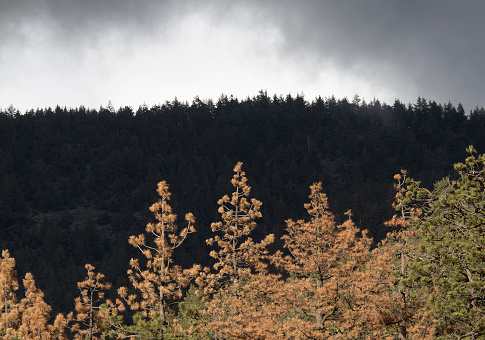The Forest Service oversees thousands of buildings that are unused, many that are falling apart, full of mold, and pose safety hazards, according to a new audit.
The inspector general for the U.S. Department of Agriculture found that the Forest Service has compiled over $5 billion worth of repairs to buildings, roads, dams, and trails it operates.
Officials admit they are becoming a "national junkyard" by overseeing thousands of decrepit buildings the government does not need.
"During our fieldwork, we observed [Forest Service] buildings that were not inspected as well as buildings that forest officials stated had structural issues, mold growth, wide-spread rodent droppings, and other health and safety concerns including 20 buildings with concerns so severe that officials referred to them as 'red tagged,'" the inspector general reported.
"Red tag" refers to buildings and structures that are so unsafe they are closed.
Some buildings had asbestos, and one residential building observed by auditors had a 15-foot hole in the roof, as well as mold and fire damage.
"As a result, unsafe structures can pose health and safety risks, such as hantavirus or other concerns, to [Forest Service] employees and the public," the inspector general said.
The Forest Service manages almost 40,000 administrative, recreation, and research buildings. By comparison, there are 14,146 McDonald's restaurants in the U.S., and 13,172 Starbucks locations.
The Forest Service also manages 193 million acres of land, as well as roads, dams, and bridges, and has not dealt with $5.5 billion—nearly the amount of its entire $7 billion budget—in maintenance costs for all of its properties.
The Forest Service has identified 3,374 buildings it wants to decommission, which need $195 million worth of repairs. In all, the Forest Service's buildings need $1.195 billion in maintenance.
In addition, the Forest Service is not conducting safety inspections of dams that are considered high-risk. The Forest Service oversees approximately 3,200 dams nationwide.
"We found that [the Forest Service] continues to lack an effective control structure for validating that required plans are maintained for dams and necessary inspections of dams are performed to identify any deficiencies affecting a dam's safety," the inspector general said.
Auditors surveyed a sample of 182 dams the Forest Service oversees, and found 76 percent either had no documentation or did not receive required safety inspections.
Seventy-seven percent of dams considered to be high hazards "did not receive required safety inspections within the last 5 years." Sixty-one percent had no emergency action plan, and some that did had not been updated since 1982.
Dams are considered high hazards if their potential failure is "expected to cause the loss of one or more human lives."
"[The Forest Service] lacks assurance that it is accurately reporting deferred maintenance costs for FS' dams and adequately protecting people, entities, and the environment from aging dams that threaten public safety," the inspector general said.
The Forest Service said a lack of consistent funding was the biggest challenge in addressing dam safety.
In response to the audit, the government also said wildfire management costs have increased to take up half of its budget, leaving insufficient funds for the Forest Service's other programs.
"[The Forest Service] claims it is now at a tipping point, and the programs used for infrastructure management, repairs, and maintenance are among the programs that have experienced significant declines," the inspector general said.
